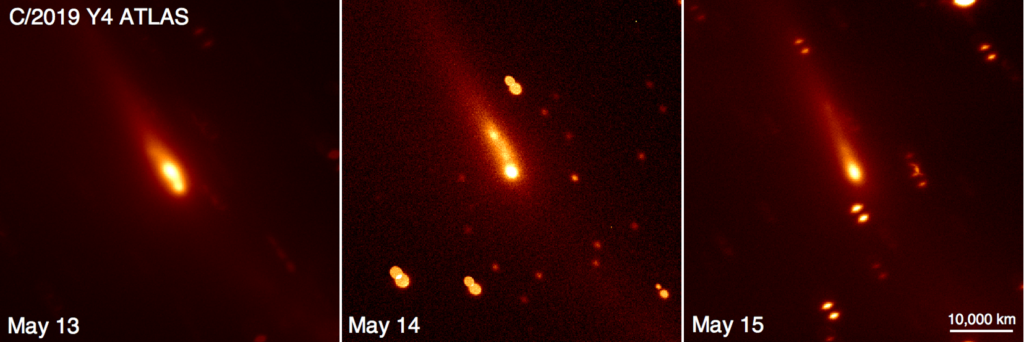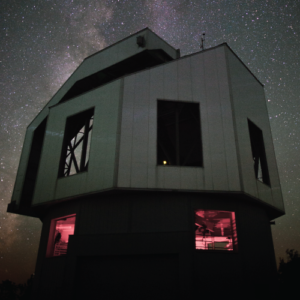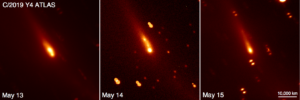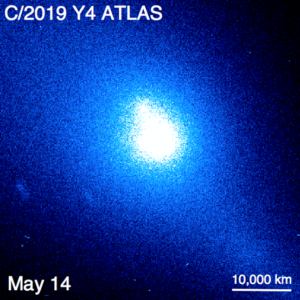
By Stephen Levine, Matthew Knight, & David Schleicher
The 4.3-meter Lowell Discovery Telescope (LDT) resumed science operations last night, May 18. The facility was closed on the 31st of March in response to the COVID-19 pandemic. Since then, Lowell technical staff have been working on new operations plans that will permit us to resume observing while ensuring the safety of all involved.
[br]
The final steps in preparation for resuming scientific observing were taken during the week of May 11. Engineering and Instrumentation staff made sure that the telescope and the instruments were in proper working order, ready for four nights of on-sky recertification. The on-sky testing allowed us to use all modes of the telescope just as a regular observer would. We managed to observe Comet ATLAS (C/2019 Y4) over three nights, directly imaging the time evolution of this comet as it continues to fragment.
[br]

Lowell Discovery Telescope
The choice of this comet as a test subject was not arbitrary. Comet ATLAS (C/2019 Y4) was discovered late last year and was brightening rapidly before unexpectedly beginning to break up in late March, just after telescopes closed due to the virus. Images taken with the Lowell 42-inch Hall Telescope two weeks ago by Brian Skiff showed that while the comet was now much fainter than in March, a primary body remained along with a debris trail. From a scientific perspective, this is a timely target. From a telescope operations perspective it was very useful, allowing us to successfully test some of the more complex modes of operation.
[br]
The new LDT images greatly improve on the earlier data. The attached images (all with false color stretches and on the same physical scale) reveal that multiple fragments remain and continue to produce new gas. The three-panel image shows dust images on May 13-15. The relative brightness and positions of the condensations change from night to night, suggesting that fragments are continuing to fragment, moving quickly, and/or changing in brightness rapidly.
[br]

[br]

The single image shows a gas (cyanogen) image taken on May 14. The gas coma is much larger than the dust coma, and circular comae around the two brightest fragments can be discerned, implying that both are still active.
[br]
As seen from Earth, Comet ATLAS was less than 35 degrees away from the Sun in the last LDT image. Very few comparably powerful telescopes in the world are capable of imaging so close to the Sun, and none as large are equipped with the narrowband filters needed to image cyanogen gas. The comet is now inaccessible even to LDT, but will be observed by solar observatories in space (at much lower spatial resolution).
[br]
The images were taken from the LDT by Dr. Stephen Levine (LDT Scientist) and Jason Sanborn (Night Operations Manager). The data were analyzed by Dr. Matthew Knight (USNA/U. Maryland), who graciously provided the attached images.
[br]
On behalf of all the folks who have worked so hard on LDT, we are excited to be able to resume doing what we love best, observing.